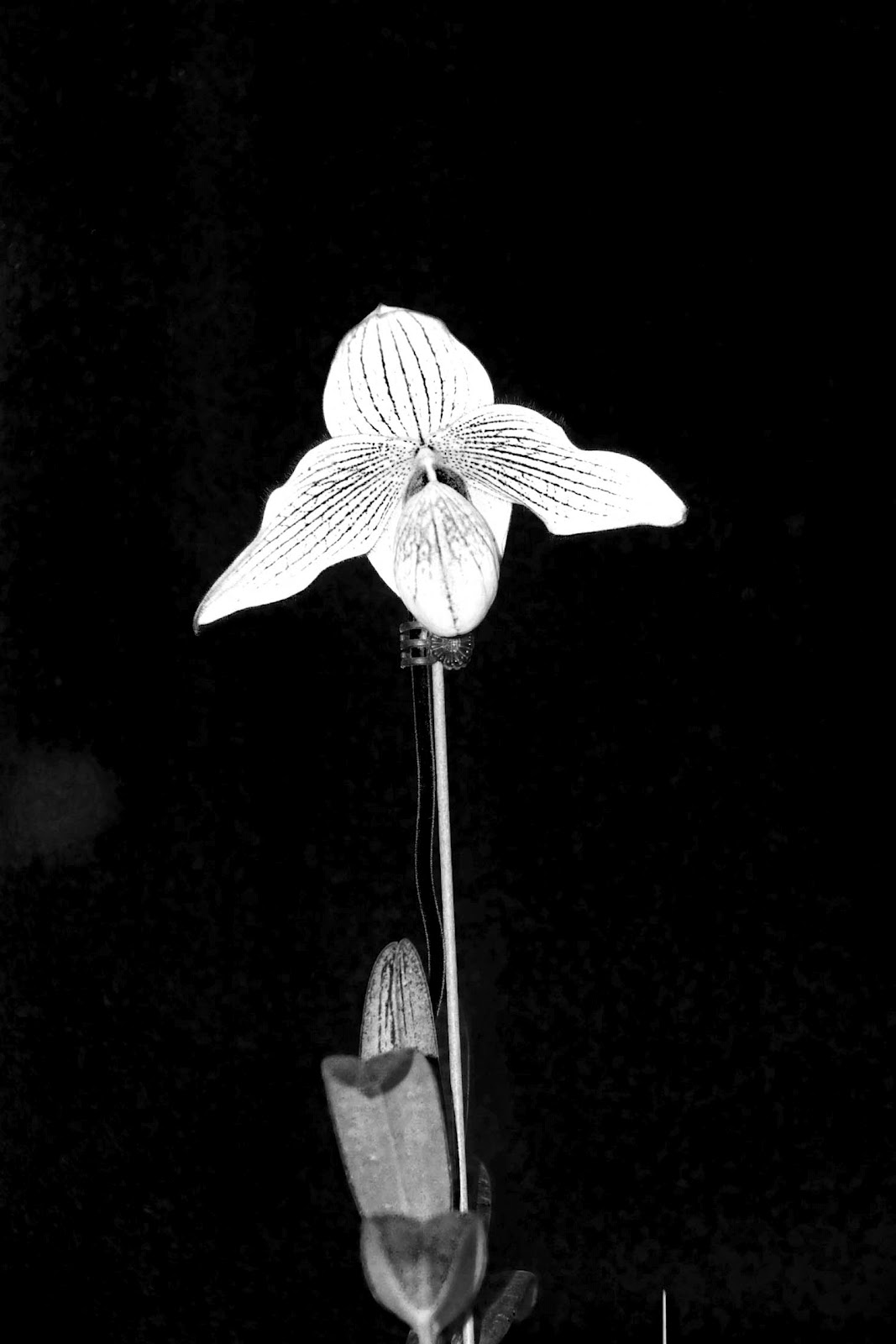You are using an out of date browser. It may not display this or other websites correctly.
You should upgrade or use an alternative browser.
You should upgrade or use an alternative browser.
For the fun of it...
- Thread starter thelink
- Start date

Help Support Slippertalk Orchid Forum:
This site may earn a commission from merchant affiliate
links, including eBay, Amazon, and others.
G
Ghosthunt64
Guest
Paphiopedilum Dollgoldi?
mormodes
Well-Known Member
Ah, the old days of B&W photography! Makes you realize how far we've come that we expect excellent color photos in just about anything we do/see these days. There were a lot of comments when the AOS published their first image in the magazine and then the first time they went with color. Both pro and con, although how someone could be against color imagery is beyond me. The expense, I suppose.
Can one capture quite the same tones & greys in digital as one can in film? Just asking. I think a lot of what artistry we saw in B&W film was in exposing & developing the film, but what do I know, I'm just a walking repository of other people's knowledge.
Can one capture quite the same tones & greys in digital as one can in film? Just asking. I think a lot of what artistry we saw in B&W film was in exposing & developing the film, but what do I know, I'm just a walking repository of other people's knowledge.
SlipperFan
Addicted
It's the ghost orchid...
I would say it's possible. The both have the same issues but based on different technologies. Pixels/grain -- in both cases, the smaller they are, the more detail and tonal differences that can be captured. Getting a long range of tones on film was possible when one mastered the zone system, which was a way of controlling the variables between exposure and film development. Digitally, it will depend on the camera sensors as well as a person's Photoshop (or other high-end image editing programs, if any) skills. In film, darkroom skills in printing was the final control. Ansel Adams, one of the greatest black and white printers called printing a negative akin to playing from a score. Digitally, it will be a matter of coordinating the printer's (machine) technical ability with the image on the monitor (calibration). Both would care about choice of paper.
Ah, the old days of B&W photography! Makes you realize how far we've come that we expect excellent color photos in just about anything we do/see these days. There were a lot of comments when the AOS published their first image in the magazine and then the first time they went with color. Both pro and con, although how someone could be against color imagery is beyond me. The expense, I suppose.
Can one capture quite the same tones & greys in digital as one can in film? Just asking. I think a lot of what artistry we saw in B&W film was in exposing & developing the film, but what do I know, I'm just a walking repository of other people's knowledge.
I would say it's possible. The both have the same issues but based on different technologies. Pixels/grain -- in both cases, the smaller they are, the more detail and tonal differences that can be captured. Getting a long range of tones on film was possible when one mastered the zone system, which was a way of controlling the variables between exposure and film development. Digitally, it will depend on the camera sensors as well as a person's Photoshop (or other high-end image editing programs, if any) skills. In film, darkroom skills in printing was the final control. Ansel Adams, one of the greatest black and white printers called printing a negative akin to playing from a score. Digitally, it will be a matter of coordinating the printer's (machine) technical ability with the image on the monitor (calibration). Both would care about choice of paper.
Similar threads
- Replies
- 11
- Views
- 2K



